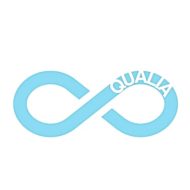Google’s E-E-A-T Guidelines: What They Mean for Your Content What They Mean for Your Content

In the digital age, where content is abundant but credibility is scarce, Google continuously refines its algorithm to prioritise high-quality, accurate, and trustworthy content. One of the most influential frameworks guiding Google’s content evaluation process is E-E-A-T, which stands for Experience, Expertise, Authoritativeness, and Trustworthiness.
Originally introduced as E-A-T, Google added an extra “E” for Experience in December 2022 to highlight the importance of first-hand knowledge in content creation. With this update, Google now prioritises content that demonstrates real-world experience, particularly in fields like health, finance, product reviews, and legal matters.
E-E-A-T is not a direct ranking factor but plays a crucial role in determining content quality, which indirectly affects search rankings. Websites that align with E-E-A-T principles are more likely to:
- Rank higher in Google search results
- Build audience trust and credibility
- Establish authority in their industry
- Drive more organic traffic and conversions
In this comprehensive guide, we’ll explore:
- What E-E-A-T is and why it matters
- How Google evaluates content based on E-E-A-T
- Steps to optimise your content for better E-E-A-T scores
- Common mistakes that can hurt your E-E-A-T credibility
- The impact of E-E-A-T on SEO and content marketing strategy
- Real-world examples of how E-E-A-T influences rankings
- Tools and resources to measure and improve E-E-A-T
By the end of this article, you’ll have a clear, actionable roadmap for improving your content strategy and ensuring Google sees your website as credible and authoritative.
What is E-E-A-T? Breaking Down the Four Key Elements
E-E-A-T consists of four crucial elements that Google considers when evaluating content quality:
1. Experience (The Newest Addition to the Framework)
Google now prioritises content that shows first-hand experience with the topic.
Example 1: A travel blogger who shares a first-hand review of visiting Bali (with personal photos) will rank higher than a generic travel website summarising other people’s experiences. This personal touch, real-world insights, and authentic representation add valuable context to the content.
Example 2: A product reviewer who has actually used and tested the gadget will be favoured over someone who rewrites manufacturer descriptions. A hands-on review is more valuable to users because it reflects genuine experience and practical insights that can guide purchasing decisions.
The addition of Experience underscores the fact that Google is evolving beyond simply verifying qualifications and expertise—content that reflects real-world interaction and authenticity is now a higher priority. This change enhances the user’s experience, making content more relatable and practical.
2. Expertise (Specialised Knowledge & Qualifications)
Expertise refers to the depth of knowledge of the content creator. Google favours content written by certified professionals or experienced experts.
Example 1: A financial blog post about retirement planning written by a certified financial planner (CFP) will rank better than one written by an anonymous freelancer who may not have the same depth of knowledge. Users can trust information that comes from professionals, especially when it pertains to their financial well-being.
Example 2: A medical article about diabetes written by a licensed doctor will be prioritised over content from an unverified blog. This reflects the increasing importance of qualifications, as health-related content can directly affect a person’s well-being. Google wants users to have access to medically accurate and reliable information.
While there is an increasing expectation of expertise in many fields, it’s important to remember that expertise doesn’t always have to come from formal qualifications. Demonstrating practical knowledge, years of experience, or certifications can help your content be recognised as authoritative.
3. Authoritativeness (Recognition & Influence in the Industry)
Authoritativeness measures how well-respected a website or content creator is within their industry. This is closely tied to the recognition a brand or author has achieved over time.
Factors that contribute to authority:
- Backlinks from reputable sources (Harvard.edu, Forbes.com)
- Industry recognition (cited by experts or institutions)
- Brand reputation (well-established websites)
Example 1: A cybersecurity blog post referenced by Norton Antivirus or Google Security will have higher authoritativeness. When a trusted industry leader backs your content or cites your work, it adds credibility and boosts your authority in the field.
Example 2: A legal guide frequently cited in law journals will be more authoritative than a random blog post. This is because the legal community views the author as a credible source, and the content’s alignment with trusted institutions elevates its reputation.
To become authoritative, you must consistently publish high-quality, well-researched content that gets referenced and linked to by credible sources. Additionally, being cited by respected figures in your industry helps solidify your content’s authority.
4. Trustworthiness (Accuracy, Transparency & Security)
Trust is the foundation of E-E-A-T. Google prioritises websites that are secure, transparent, and factually accurate. Trustworthiness is particularly vital for content that could impact users’ well-being, such as health, financial, or legal topics.
How to improve trustworthiness:
- Use HTTPS encryption to secure your website
- Provide clear contact details (email, address, support)
- Fact-check your content & cite reliable sources
Example 1: A news website that cites Reuters, BBC, and The New York Times will be considered more trustworthy than a blog with no sources. Properly sourced content that relies on reputable news outlets or academic papers enhances the trustworthiness of your site.
Example 2: An e-commerce site with a physical address and verified customer reviews will have higher trust than a website with no contact information. Trustworthiness also includes aspects such as privacy policies, clear return policies, and customer support.
For many industries, especially those in the YMYL (Your Money or Your Life) category, trustworthiness isn’t optional—it’s essential. Without trust, content can easily be dismissed as unreliable or dangerous.
Why is E-E-A-T Important?
E-E-A-T is particularly crucial for websites covering Your Money or Your Life (YMYL) topics—subjects that can impact a person’s health, finances, or well-being. Websites in this category are held to a higher standard because misinformation or low-quality content can have real-world consequences for users.
Examples of YMYL Topics:
- Health & Wellness: Medical advice, weight loss tips, mental health resources
- Finance & Investing: Credit card reviews, retirement planning, stock market predictions
- Legal & Safety Topics: Personal injury law, consumer rights, cybersecurity
Google applies extra scrutiny to these topics because misleading or false information can have serious consequences on people’s lives. For this reason, health, legal, and financial websites are expected to demonstrate high levels of expertise, authority, and trustworthiness in their content.
How Google Evaluates E-E-A-T
Google employs human Quality Raters to evaluate webpages based on E-E-A-T principles. Quality Raters do not directly affect rankings, but they provide valuable data that helps improve the overall algorithm. These raters use the Quality Rater Guidelines (QRGs) to determine the quality of content.
Key factors Quality Raters consider:
- Author credentials (verified expertise)
- Citations & references (credible sources)
- Website authority (industry reputation)
- User reviews & ratings (trust signals)
- Transparency & security (ownership details, HTTPS)
By understanding how Google evaluates content through its human raters, you can better tailor your content strategy to meet their expectations.
How to Optimise Your Content for E-E-A-T
Demonstrate First-Hand Experience
- How to do it:
- Share personal stories, case studies, and real-world insights
- Include original photos, videos, and testimonials
- Provide detailed product reviews based on hands-on experience
Establish Expertise
- How to do it:
- Highlight author credentials in an author bio
- Conduct in-depth research & cite reliable sources
- Collaborate with industry experts for guest posts
Build Authoritativeness
- How to do it:
- Earn backlinks from reputable sources
- Get mentioned by influential industry leaders
- Publish high-quality, research-backed content consistently
Strengthen Trustworthiness
- How to do it:
- Use HTTPS encryption for site security
- Display clear contact details (business address, phone, email)
- Encourage user reviews and testimonials
Common E-E-A-T Mistakes to Avoid
- Publishing thin or AI-generated content: Content that lacks depth or is purely automated is unlikely to demonstrate expertise or experience.
- Exaggerating or faking credentials: Falsifying qualifications or credentials can lead to a severe loss of trust and authority.
- Using clickbait headlines with misleading info: Misleading users can harm both trust and authority, ultimately affecting rankings.
- Not citing sources or using unreliable references: Always ensure your information is backed by credible sources, especially in YMYL topics.
The Impact of E-E-A-T on SEO & Content Strategy
By aligning your content with E-E-A-T principles, you can expect the following benefits:
- Higher rankings & increased organic traffic: Google rewards content that aligns with these principles, which can lead to improved rankings and more visitors.
- Stronger brand reputation & audience trust: Demonstrating experience, expertise, and trustworthiness builds credibility, which strengthens your brand’s reputation over time.
- Higher engagement & conversion rates: When users trust your content, they are more likely to engage with it and take the desired actions, such as making a purchase or signing up for a service.
Real-World Examples of E-E-A-T in Action
Example 1: WebMD (High E-E-A-T) vs. Personal Blog (Low E-E-A-T)
WebMD is a well-established medical resource with expert-reviewed content, providing trustworthy health information. A personal blog with no verified expertise and inaccurate health tips, on the other hand, would rank lower for health-related searches.
Example 2: CNET (Expert Reviews) vs. Amazon User Reviews
CNET publishes in-depth expert reviews of products that demonstrate hands-on testing, making it a more authoritative source than a generic Amazon review written by a random user.
Best Tools to Measure & Improve E-E-A-T
- Google Search Console: Analyse traffic & credibility to identify areas for improvement.
- Moz & Ahrefs: Check backlinks & domain authority to assess website authority.
- Google’s Quality Rater Guidelines: Improve content quality by adhering to the same principles used by Google’s raters.
E-E-A-T is essential for higher rankings, credibility, and trust. By following these guidelines, you can enhance your SEO strategy and establish yourself as a trusted industry authority.
Take action today! Optimise your content, showcase expertise, and build trust to dominate Google rankings and grow your online presence.









